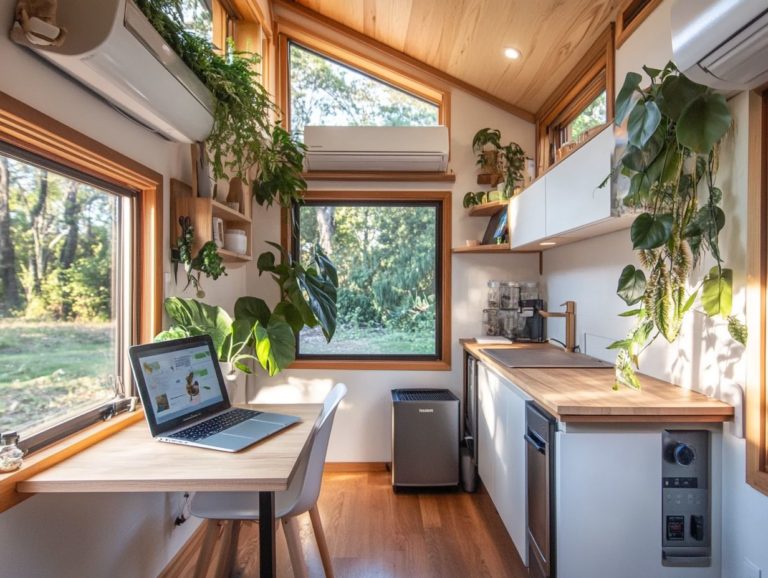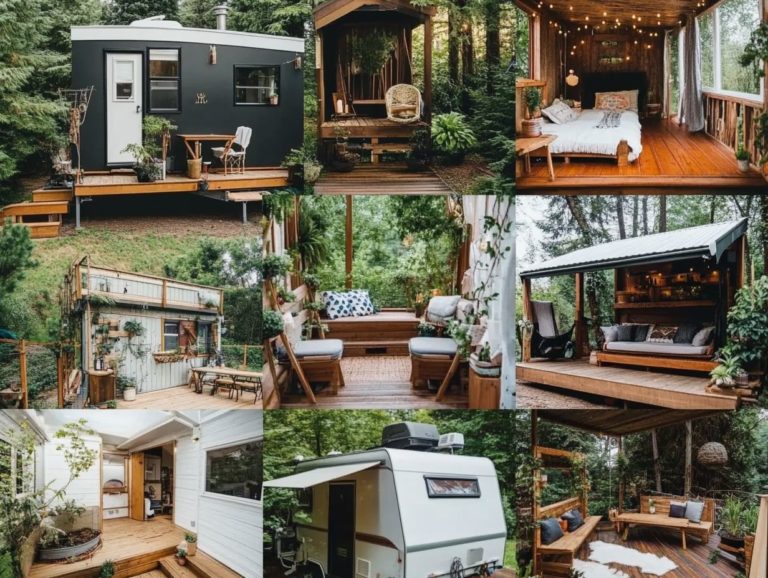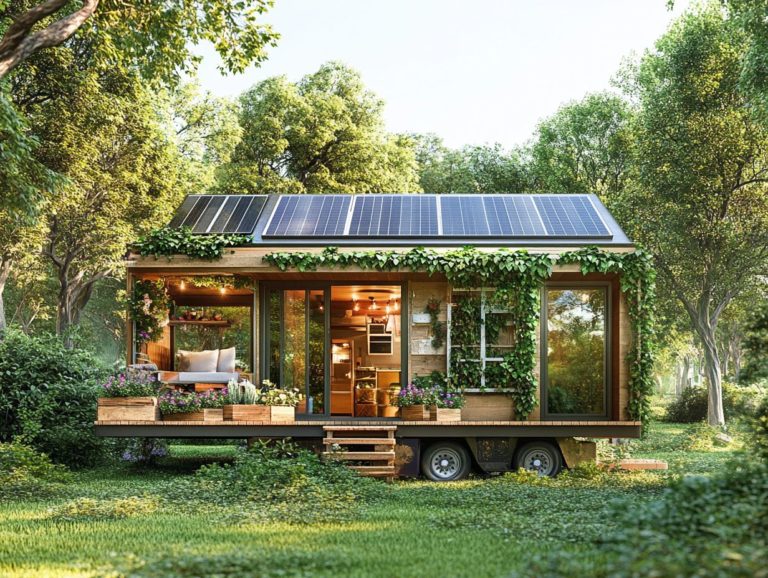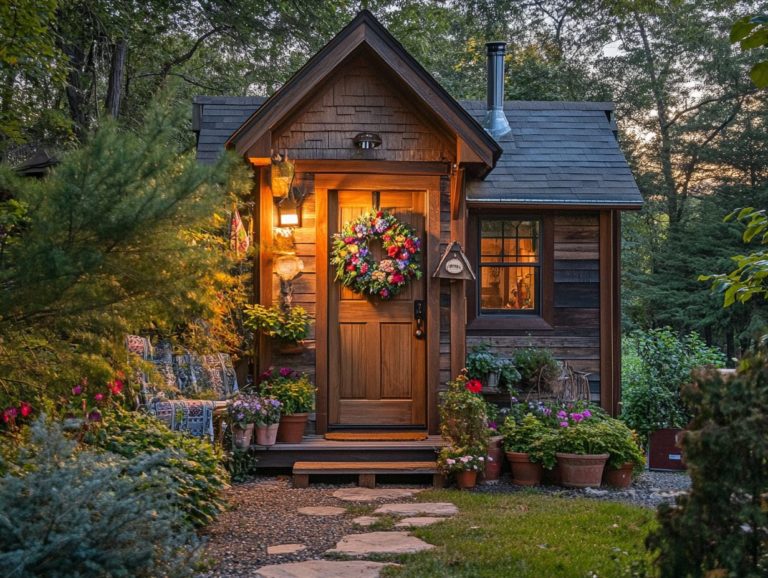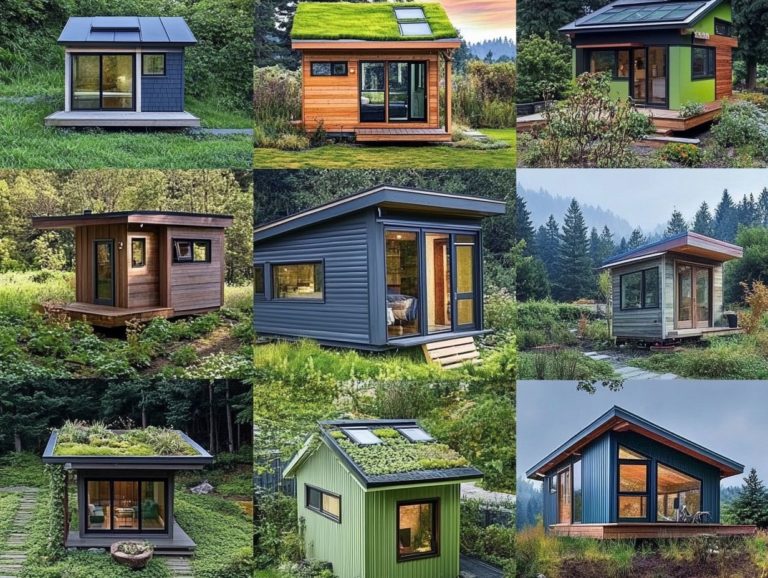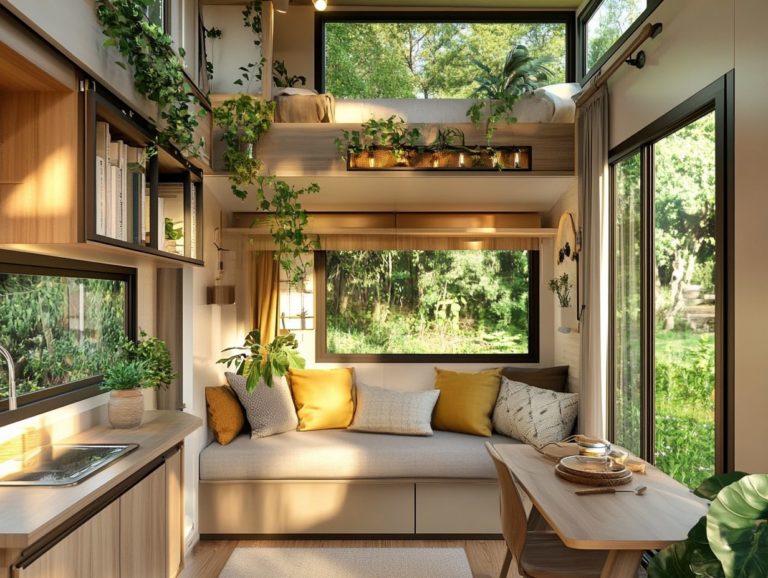The Role of Textiles in Tiny House Design
Tiny houses have captured your imagination, offering a minimalist lifestyle that prioritizes quality over quantity. However, the crucial role of textiles reflecting modern style and family-friendly functionality in enhancing both functionality and aesthetics is often overlooked. Creating cozy interiors in these compact spaces is key.
From cozy bedroom linens to stylish kitchen textiles, the right fabric choices can transform your tiny house into a comfortable and inviting home. Get ready to explore how textiles can transform your tiny home into a stylish haven! This article delves into the various dimensions of textiles in tiny home design, including tips for selection, maintenance, and innovative applications that maximize space while infusing personality.
Explore how textiles can elevate your tiny living experience!
Contents
- Key Takeaways:
- The Concept of Tiny Houses
- The Role of Textiles in Tiny House Design
- Choosing the Right Textiles for Tiny Houses
- Textile Applications in Different Areas of a Tiny House
- Maintaining and Cleaning Textiles in Tiny Houses
- Innovative Uses of Textiles in Tiny House Design
- Frequently Asked Questions
- What is the role of textiles in tiny house design?
- How do textiles contribute to the sustainability of tiny house design?
- What types of textiles are typically used in tiny house design?
- Can textiles be used to maximize space in a tiny house?
- How can textiles be incorporated into the exterior design of a tiny house?
- Are there any challenges to using textiles in tiny house design?
Key Takeaways:
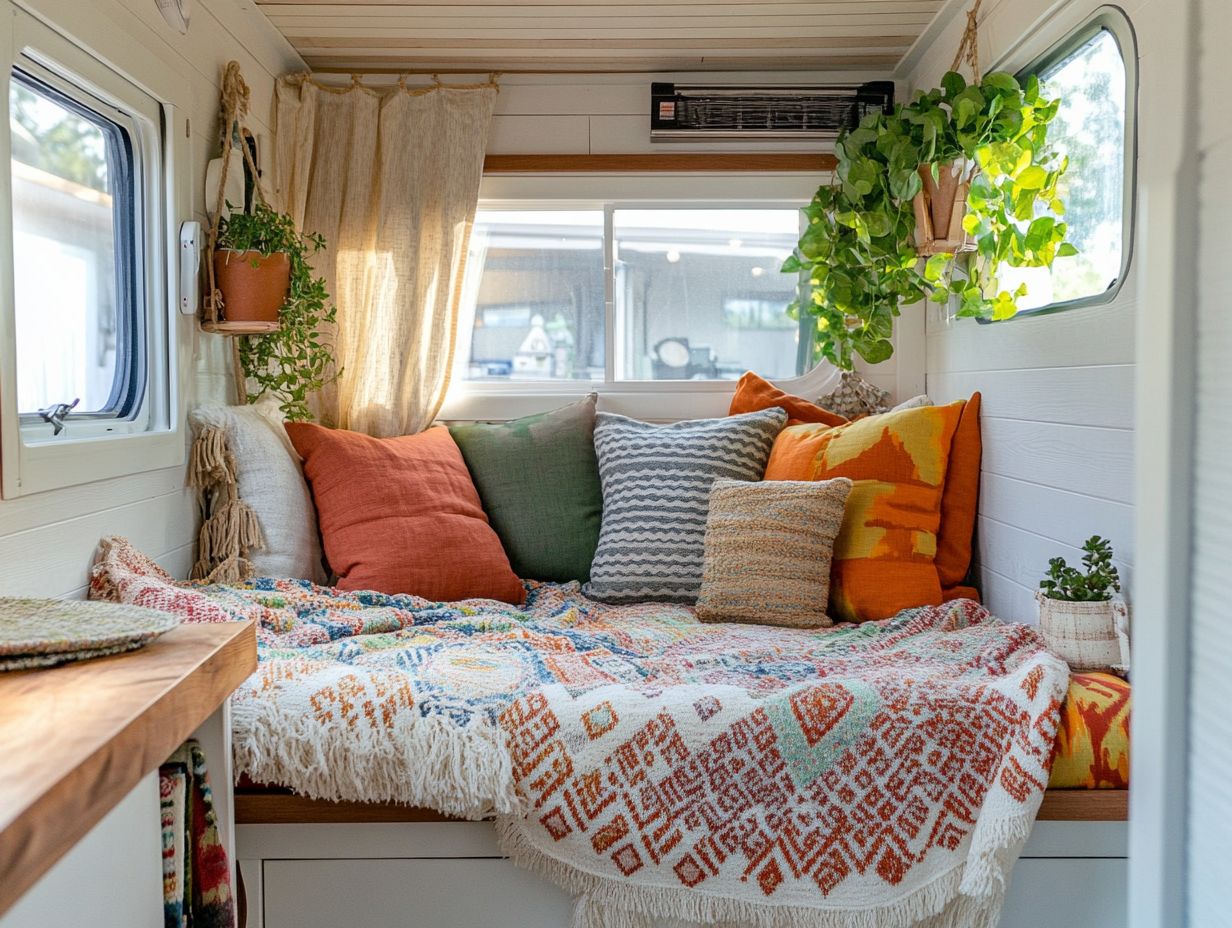
- Textiles play a significant role in both functionality and aesthetics in tiny house design.
- Proper selection and maintenance of textiles are essential factors to consider for maximizing space and comfort in tiny homes.
- The use of textiles in tiny houses allows for creative and unique design solutions in various areas, such as the bedroom, kitchen, and living spaces.
The Concept of Tiny Houses
Tiny houses embody a revolutionary approach to contemporary living, highlighting sustainability and eco-friendly homes, simplicity, and the efficient use of space with creative storage solutions. These compact dwellings, often crafted by esteemed construction companies like United Tiny Homes, are becoming increasingly popular in regions such as California and New York, celebrated for their eco-friendly designs that embrace a minimalist aesthetic, enhancing the luxury result.
The building process showcases design options, including scale furniture that prioritize essential features and functional layouts, making every square foot count in the most elegant way possible.
Defining Tiny Houses and Their Benefits
Tiny houses, with their compact design and efficient use of space, present many benefits that appeal to those in search of alternatives to traditional living arrangements.
These charming homes focus on functionality. They often include multipurpose furniture that maximizes space and keeps things clutter-free, allowing for outdoor living opportunities that harmonize with natural light and seamlessly extend your living space.
Inside, the design elements exude warmth and invite you to personalize your space, fostering a sense of comfort and belonging. Embracing minimalist living can lead to financial freedom and a sustainable lifestyle that champions quality over quantity, ultimately enriching your daily experiences.
The Role of Textiles in Tiny House Design
Textiles play a pivotal role in your tiny house design, significantly enhancing both the aesthetic allure and functionality of these compact spaces.
By incorporating textiles, you can create inviting interiors that evoke a rustic cabin feel that elevate the modern style of tiny homes, striking a perfect balance between comfort and practicality.
Functional and Aesthetic Uses of Textiles
Functional textiles in tiny homes serve a dual purpose, blending comfort with aesthetic appeal to elevate your overall living experience.
When selecting these textiles, you have the opportunity to choose not only for their captivating colors and textures but also for their resilience against the daily wear and tear typical in compact spaces. Durable fabrics like canvas or nylon are often your go-to options for upholstery; they offer longevity and are a breeze to clean, making them perfect for high-traffic areas.
Natural fibers such as cotton and linen can infuse your home with a cozy ambiance while being easily dyed in earthy tones that harmonize beautifully with the tiny house aesthetic. Adding patterned throw pillows or textured rugs introduces depth and character to your space, ensuring that even with limited square footage, you can express your unique style while embracing practical solutions.
Start exploring how textiles can elevate your tiny living space today by considering using recycled materials in tiny house designs!
Choosing the Right Textiles for Tiny Houses
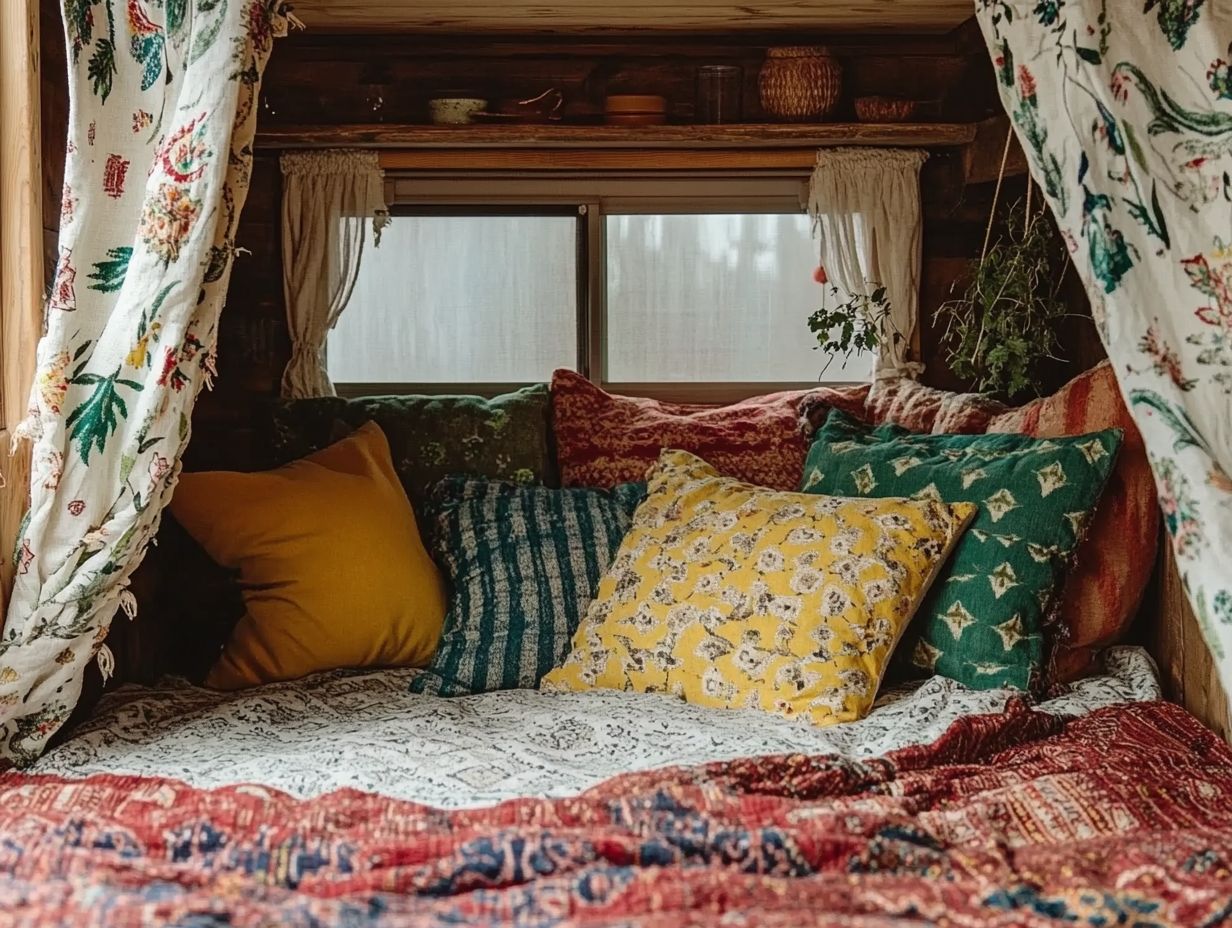
Choosing the right textiles for tiny houses requires a thoughtful evaluation of several factors that impact both functionality and aesthetics. Each selection should harmonize with your vision for the space, enhancing the overall experience of your home.
Factors to Consider in Textile Selection
When selecting textiles for your tiny house, focus on key factors like durability (how well a fabric lasts over time), ease of maintenance, and environmentally friendly options to create a long-lasting and sustainable living environment.
Also, consider fabric weight and texture; these elements greatly influence comfort and aesthetic appeal. Lighter fabrics can open up small spaces, making them feel airy and expansive. Textures like cotton or linen introduce warmth, fostering a cozy atmosphere.
Color schemes are equally important; light hues reflect light and enhance visibility, creating an illusion of spaciousness. All these aspects work together to craft a harmonious living space that balances relaxation with practicality.
Textile Applications in Different Areas of a Tiny House
Textiles serve multiple purposes within tiny houses, elevating both functionality and aesthetics. They draw inspiration from Pinterest for the bedroom, kitchen, and living areas, transforming compact spaces into inviting and practical environments.
Bedroom, Kitchen, and Living Spaces
In tiny houses, the right bedroom textiles make your space cozy and warm. Kitchen fabrics enhance functionality, while living room textiles create inviting interiors.
Opting for soft linens and plush quilts in the bedroom not only enhances aesthetics but also ensures a restful night s sleep, bringing tranquility to your compact haven.
For the kitchen, durable cotton or polyester fabrics are ideal for easy cleaning and resilience against daily wear. Use stylish aprons and colorful dish towels inspired by Frank Lloyd Wright designs to add charm and personality to your cooking area.
In the living room, textured throws and patterned cushions transform the ambiance, fostering a welcoming atmosphere for family and guests alike. Thoughtfully selected materials reflect your personal style while enhancing your daily living experience.
Maintaining and Cleaning Textiles in Tiny Houses
Maintaining and cleaning textiles in tiny houses requires a thoughtful approach. By focusing on specific tips and strategies, you can extend the life of your textiles and foster a clean and healthy living environment.
Tips and Tricks for Proper Care
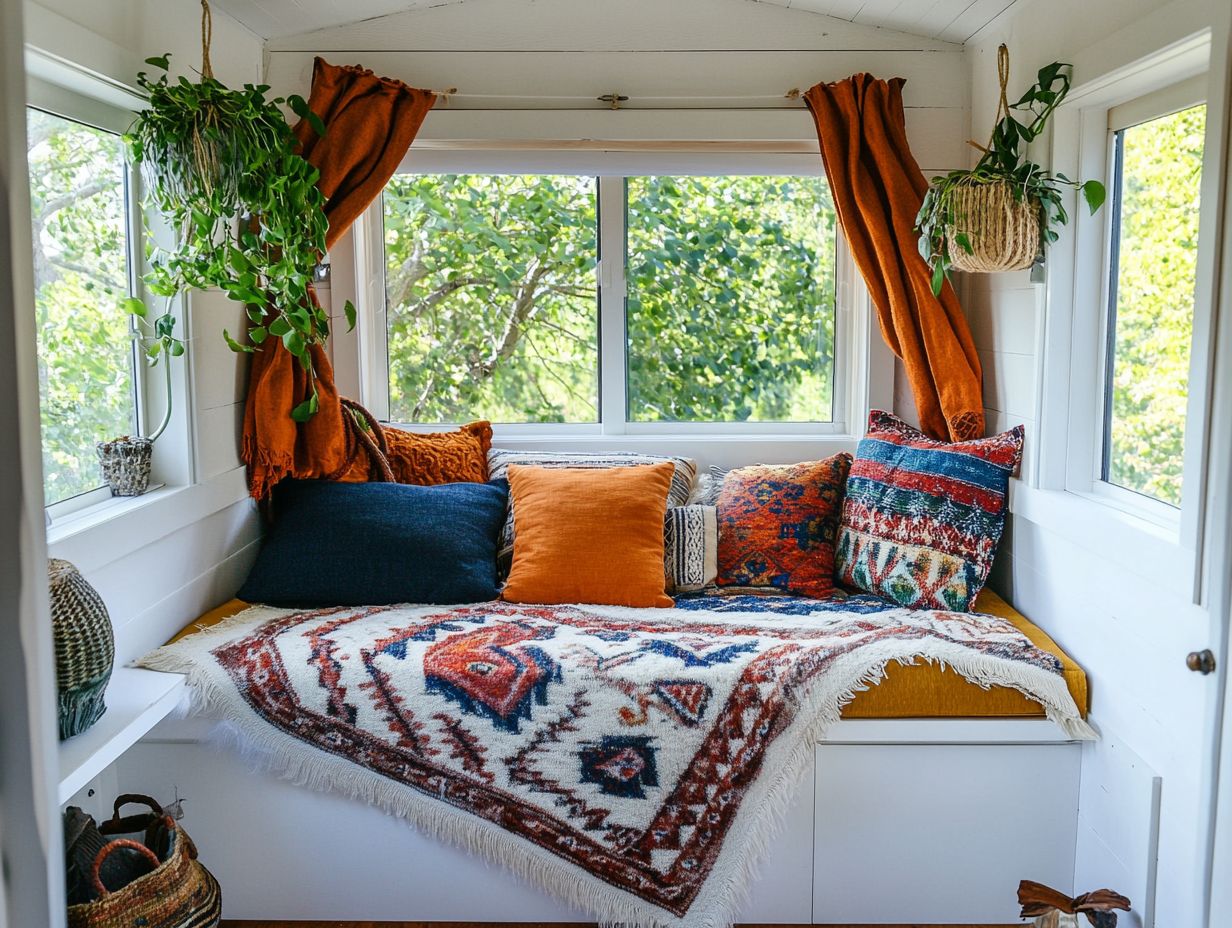
Proper care and maintenance of textiles in tiny homes can significantly extend their longevity and enhance their appearance. This creates a comfortable and aesthetically pleasing living space.
Incorporate eco-friendly cleaning methods inspired by Eco Relics initiatives, such as using vinegar and baking soda, to tackle common stains without harsh chemicals. Understand the specific needs of various fabrics; for instance, wash delicate linens in cold water and air-dry to prevent shrinkage.
For storage, use breathable cotton bags, perfect for seasonal textiles. This will safeguard them from moisture and pests. Use preventative measures like natural sprays to repel dirt and regularly rotate cushions to ensure even wear. This will keep your textiles looking their best for years to come.
Innovative Uses of Textiles in Tiny House Design
Innovative applications of textiles in tiny house design can revolutionize your approach to space utilization. By integrating these creative elements, you can elevate both functionality and aesthetic appeal, transforming your living environment into a harmonious blend of practicality and beauty.
Explore more about textiles and tiny house living! Share your experiences and inspirations!
Creative and Unique Applications
Textiles can revolutionize tiny house design. Furniture like storage ottomans can serve as seating or tables.
Vibrant wall hangings can act as room dividers while keeping the space open and airy.
By incorporating innovative fabric choices, you can transform everyday items into visually striking pieces that serve multiple purposes. The right integration of textiles can soften stark architectural lines, adding warmth and character to your home.
Even simple elements like cushions or throws can infuse color, texture, and comfort, turning a small living environment into a space that is not only functional but also inviting and stylish.
Frequently Asked Questions
What is the role of textiles in tiny house design?
Textiles enhance tiny house interiors in both function and style. They serve as insulation, furniture covers, and decorative accents.
How do textiles contribute to the sustainability of tiny house design?
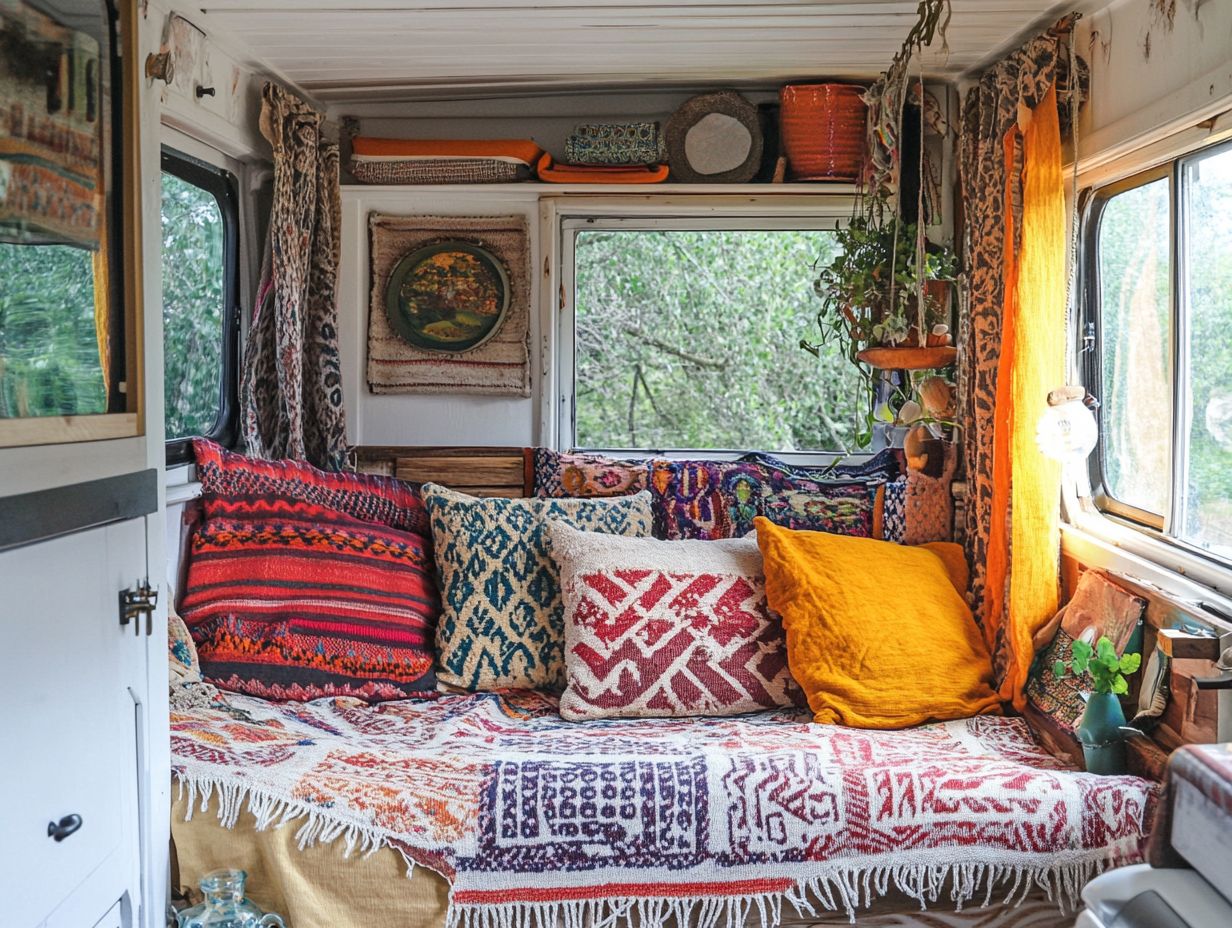
Textiles boost sustainability by using eco-friendly materials like organic cotton. They also provide insulation, helping reduce energy consumption.
What types of textiles are typically used in tiny house design?
Common textiles include natural fibers like cotton and wool, as well as synthetic materials. Recycled fabrics are also a great sustainable option.
Can textiles be used to maximize space in a tiny house?
Absolutely! Textiles can create smart storage solutions. A pull-out sofa can double as a bed, while wall-mounted fabric organizers free up floor space.
How can textiles be incorporated into the exterior design of a tiny house?
Use outdoor fabrics for cushions, awnings for shade, and colorful outdoor rugs. These elements add personality to your tiny house s exterior.
Are there any challenges to using textiles in tiny house design?
Balancing functionality with a minimalist look can be tricky. Choose durable fabrics that serve multiple purposes to minimize clutter.

